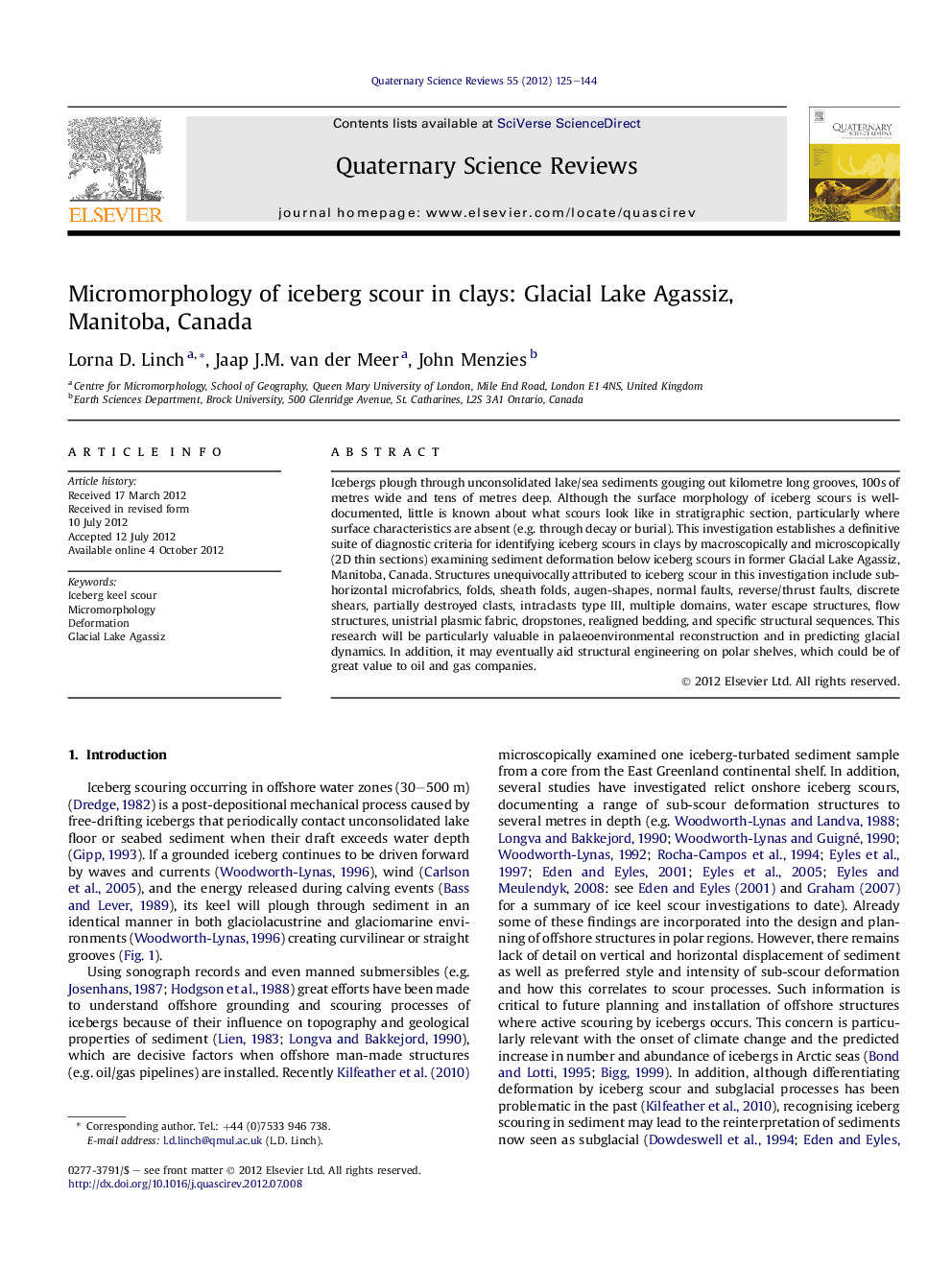| Article ID | Journal | Published Year | Pages | File Type |
|---|---|---|---|---|
| 4737189 | Quaternary Science Reviews | 2012 | 20 Pages |
Icebergs plough through unconsolidated lake/sea sediments gouging out kilometre long grooves, 100s of metres wide and tens of metres deep. Although the surface morphology of iceberg scours is well-documented, little is known about what scours look like in stratigraphic section, particularly where surface characteristics are absent (e.g. through decay or burial). This investigation establishes a definitive suite of diagnostic criteria for identifying iceberg scours in clays by macroscopically and microscopically (2D thin sections) examining sediment deformation below iceberg scours in former Glacial Lake Agassiz, Manitoba, Canada. Structures unequivocally attributed to iceberg scour in this investigation include sub-horizontal microfabrics, folds, sheath folds, augen-shapes, normal faults, reverse/thrust faults, discrete shears, partially destroyed clasts, intraclasts type III, multiple domains, water escape structures, flow structures, unistrial plasmic fabric, dropstones, realigned bedding, and specific structural sequences. This research will be particularly valuable in palaeoenvironmental reconstruction and in predicting glacial dynamics. In addition, it may eventually aid structural engineering on polar shelves, which could be of great value to oil and gas companies.
► We provide diagnostic criteria for identifying iceberg scours in clays. ► We present a conceptual model of sub-scour deformation. ► A suite of ductile and brittle structures characterise sub-scour sediment.
